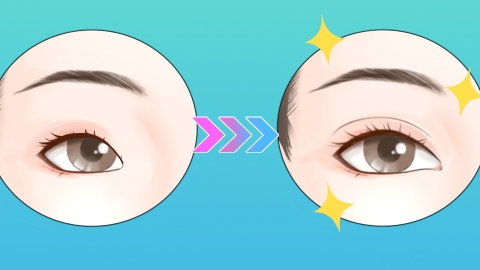How to determine if you are suitable for eye corner surgery
Generally speaking, whether or not canthoplasty (eyecorner surgery) is suitable mainly depends on the patient's ocular condition. Factors include interpupillary distance, presence of epicanthal folds, eye size, eye shape, and whether any ocular diseases exist. The typical reference price for canthoplasty ranges from 3500 to 6500 yuan per session, and noticeable improvement is usually observed within 1 to 3 months. Detailed analysis is as follows:

1. Interpupillary Distance
Individuals with wider-set eyes are suitable candidates for inner canthoplasty, as this procedure can shorten the distance between the eyes, making them appear more harmonious. Conversely, if the interpupillary distance is already narrow, canthoplasty is not recommended, as it may compromise overall ocular aesthetics.
2. Epicanthal Folds
Epicanthal folds refer to excess skin at the inner corner of the eye, which can cover part of the corner and make the eyes appear smaller. Individuals with epicanthal folds are good candidates for inner canthoplasty, as the surgery can remove the excess skin, making the eyes appear larger and more expressive. Depending on the severity of the epicanthal folds, different surgical techniques may be used. Mild cases can be treated with a straight-line epicanthoplasty, while moderate to severe cases may benefit from a Z-plasty technique.
3. Eye Size
People with small eyes are generally suitable for canthoplasty. Whether undergoing inner or outer canthoplasty, the procedure can enlarge the eyes to a certain extent. However, individuals with already large eyes do not require this procedure, as it may disrupt ocular proportions.
4. Eye Shape
Individuals whose outer canthus is higher than the inner canthus are suitable candidates for canthoplasty, as this can improve the eye shape and enhance ocular aesthetics. Conversely, if the eye shape is already well-proportioned, canthoplasty is unnecessary.
5. Presence of Ocular Diseases
If ocular inflammation such as conjunctivitis or keratitis is present, treatment should be performed first to resolve the inflammation before considering canthoplasty. Otherwise, the surgery may exacerbate the inflammation and negatively affect surgical outcomes and recovery.
Prior to deciding on canthoplasty, individuals should clearly define their aesthetic goals and communicate thoroughly with their surgeon to ensure that the surgical plan aligns with personal expectations.




